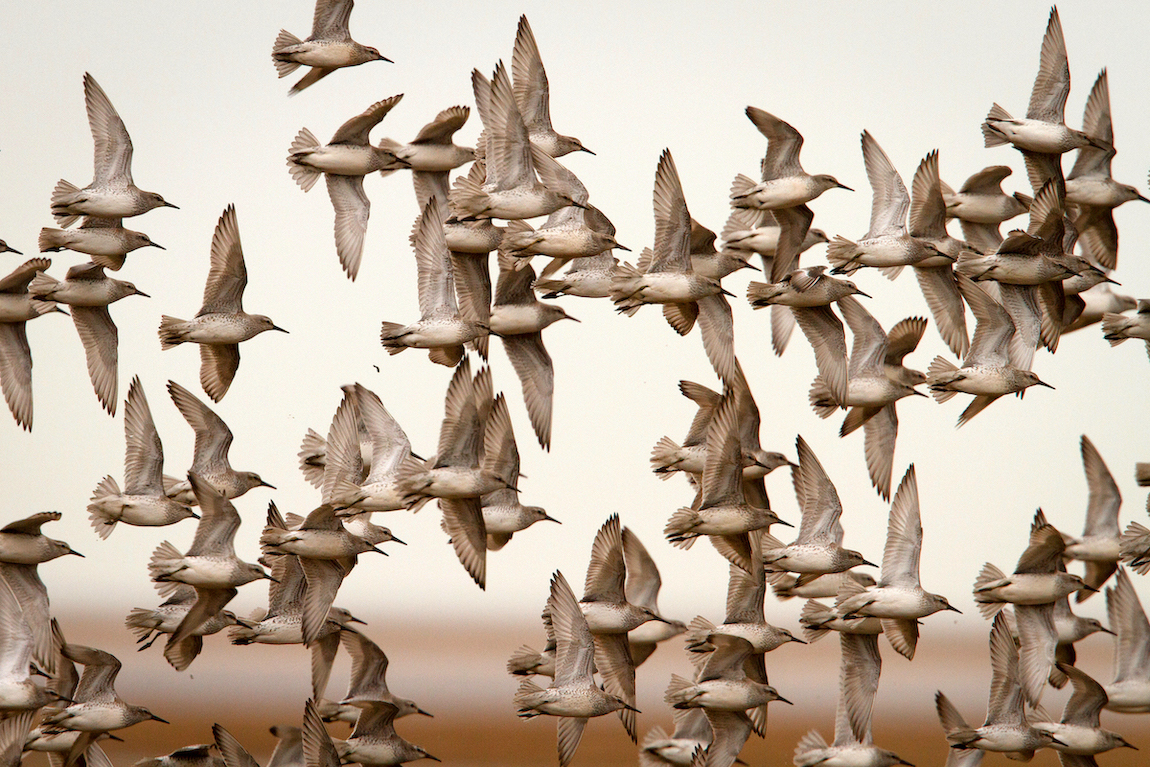Red Knot Calidris canutus
Greenland and Canadian form islandica abundant passage migrant and very common winter visitor. Very scarce inland.

The Wash can hold a third of the world population of this race of Knot during peak passage and is Britain’s number one internationally important site. The Humber comes in at number four. WeBS data reports rolling 5-year mean counts to 2018-19 at 177,869 on The Wash and 22,500 on the Humber. For the five years to 2013-14 these figures were 147,606 and 29,847 respectively, indicating that the local population is falling slightly and the long-term trend overall shows the UK wintering population down 20%. Notwithstanding that it is still Lincolnshire's commonest wader, LBR reports peak counts over the five years to 2018 from the following sites: On The Wash, 105,000 at Gibraltar Point September 2014, and on the Humber 20,000 at Cleethorpes November 2018. The sight of a flock of Knot wheeling at roost from Cleethorpes promenade or Mill Hill at Gibraltar Point is one of the finest experiences in British birding.
Large numbers of Knot have been ringed on The Wash over the years and some of these have been recovered on European coasts down into Spain and in several African countries including Liberia, Mauretania, and Senegal mainly in the autumn. Knot are Holarctic breeders and there have been recoveries in the county of birds ringed in Canada as a nestling and as a breeding adult, as well as birds ringed on passage from France, Poland, Portugal and Sweden. Knot are long-lived shorebirds often surviving to be more than 20 years old. The oldest Knot recorded in the county was trapped as an adult on The Wash in 1968 and last retrapped in 1992 when it was more than 24 years old.
(Account as per new Birds of Lincolnshire (2021), included September 2022)
